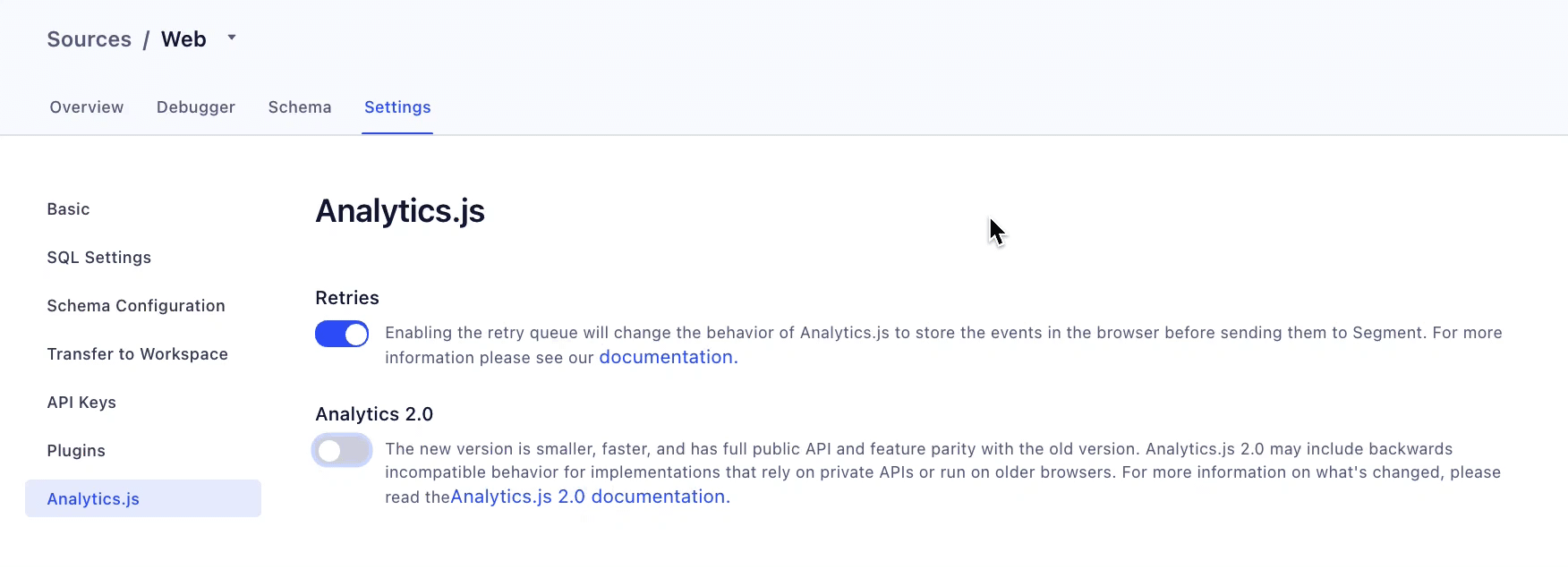Building the Future with Analytics.js 2.0
Analytics.js 2.0 is now Generally Available. Upgrading to Analytics.js 2.0 provides a number of benefits – it’s faster, more extensible, and getting started is as easy as the flip of a switch.
Analytics.js 2.0 is now Generally Available. Upgrading to Analytics.js 2.0 provides a number of benefits – it’s faster, more extensible, and getting started is as easy as the flip of a switch.
When we first introduced Analytics.js in 2012, we never imagined the impact it would have on the trajectory of our company. And yet here we are today – introducing Analytics.js 2.0, and consequently, announcing the end of service for the Classic version of the library that so many customers have come to know and love.
Don’t sound the alarm just yet – you’ve got plenty of time to determine your migration plan.
So, what’s changing? Here are the key dates you’ll need to know:
August 31, 2022 – End of Support: at this time, we’ll stop maintaining, upgrading, or updating Analytics.js Classic.
February 28, 2023 – End of Life: at this time, we’ll be removing access to Analytics.js Classic.
Why you should upgrade to Analytics.js 2.0
We know change can be hard, so we wanted to let you know that to-date, 63% of active sources have already upgraded to Analytics.js 2.0 and are seeing great results! Upgrading to Analytics.js 2.0 provides a number of benefits – it’s faster, more extensible, and getting started is as easy as the flip of a switch.

Building the next generation of Twilio Segment libraries
Customers that upgrade to Analytics.js 2.0 should experience reduced page load times, improved site performance, and improved SEO. Some of the performance optimizations we’ve introduced include efficient Javascript bundling and caching, a built-in analytics scheduler, batching, and dynamic polyfills. When combined, these optimizations add up to some serious performance gains.
Putting the developer experience (DX) first
Analytics.js 2.0 also introduces an Event Timeline using our new plugin architecture. As a result, your teams can write plugins that execute at different points during the timeline. For example, you can introduce new privacy and consent controls before an event occurs, enrich events in-flight, and collect better metrics after messages are sent. This new architecture is designed so that you can move to a more cloud-first analytics implementation.
Why are we ending service for Analytics.js Classic?
We could talk about tech debt until our faces turned blue, but the reality is – Analytics.js 2.0 is simply a stronger library. It presents significant performance improvements, is more extensible for developers, and enables you to leverage our latest features and frameworks, like Destination Actions. Simply put – it’s the way forward, both for our customers, and analytics collection at Segment.
What happens next?
The key to success is having a migration plan in place so we recommend reviewing the documentation to determine a timeline for upgrading your sources. If you’ve got questions, please contact your account team – they’re standing by to help make your migration successful.
We can’t wait to build great things together!
New to Segment?
Check out our latest Product Recap, where we cover the biggest innovations we delivered in 2021. Or, you can sign up for a demo to learn how Segment can help you better understand your customers and engage with them effectively.

Our annual look at how attitudes, preferences, and experiences with personalization have evolved over the past year.